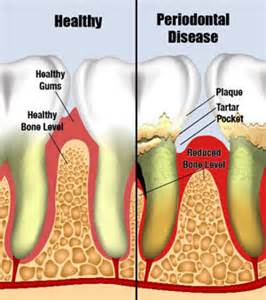Tips on Spotting The Signs of Gum Disease
Gingivitis is one of the leading dental issues worldwide, yet it is avoidable often times in case a good dental routine is followed along with a dental healthy diet is observed. Although gum disease can lead to tooth loss in a few severe cases, the effects of such disease could be reversed if it's spotted early on. Follow this advice to enable you to know the signs and symptoms of this disease:
1. Swollen Gums
Swollen gums can be painful to the touch if the initial swelling is less severe, then you can only notice visual symbols. In case your gums look swollen, puffy or redder than normal, this may be a sign they are less healthy as they needs to be. If you see minor swelling of the gums anytime, bring it up for your dentist your next dental appointment, in order to offer you information. In the event you experience any other unusual occurrences in your mouth, then you need to mention this to your dentist also.
2. Bleeding Gums
Gums which bleed when pressure is used are displaying one of the primary symptoms of early stages of gingivitis. Healthy gums must not bleed once you brush your teeth or if they are lightly touched, so if you watch a reddish tinge or a metallic taste when you goes your toothpaste in the normal dental treatments routine, you might be experiencing bleeding gums. You may have to inspect orally for more proof whether your gums are bleed if the toothpaste is only lightly tinged.
3. Foul breath
Foul breath is brought on by bacteria inside the mouth, as well as the start of gums and teeth may cause an increase in the amount of bacteria within the mouth. Developing smelly breath could be a sign how the quantity of bacteria inside your mouth has risen and that your gums usually are not as healthy since they should be. Smelly breath could be significantly worse each morning.
Periodontal Disease

4. Gaps appearing involving the teeth
Gum disease can cause your gums to recede (draw back) over the teeth. As the gums start to cover a reduced amount of your teeth, and hold teeth less firmly in place, you will notice that gaps become visible relating to the teeth. You may notice that gaps have begun to appear, you will need to adapt your dental routine to make sure that food cannot become trapped in these gaps, because this can help to exacerbate the problem. Carefully flossing using dental floss can help remove food which can be trapped between teeth, and will help with keeping your gums healthy.
Periodontal Disease

5. Loose teeth
Because the gums recede, they stop holding tooth as firmly set up as they used to, as well as the teeth can start to wobble when touched. In case your teeth have started to wobble, then its likely your gums and teeth has already reached a reasonably advanced stage, and you ought to get hold of your dentist immediately for advice.
